Related Research Articles
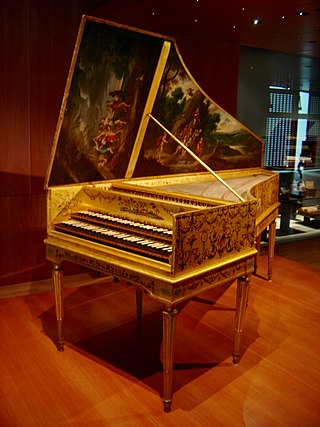
A harpsichord is a musical instrument played by means of a keyboard. This activates a row of levers that turn a trigger mechanism that plucks one or more strings with a small plectrum made from quill or plastic. The strings are under tension on a soundboard, which is mounted in a wooden case; the soundboard amplifies the vibrations from the strings so that the listeners can hear it. Like a pipe organ, a harpsichord may have more than one keyboard manual, and even a pedal board. Harpsichords may also have stop buttons which add or remove additional octaves. Some harpsichords may have a buff stop, which brings a strip of buff leather or other material in contact with the strings, muting their sound to simulate the sound of a plucked lute.
The Couperin family was a musical dynasty of professional composers and performers. They were the most prolific family in French musical history, active during the Baroque era. Louis Couperin and his nephew, François Couperin le grand, are the best known members of the family.
Jacques Duphly was a French harpsichordist and composer.
The Ruckers family were harpsichord and virginal makers from the Southern Netherlands based in Antwerp in the 16th and 17th century. Their influence stretched well into the 18th century, and to the harpsichord revival of the 20th.
Unmeasured or non-measured prelude is a prelude in which the duration of each note is left to the performer. Typically the term is used for 17th century harpsichord compositions that are written without rhythm or metre indications, although various composers of the Classical music era were composing small preludes for woodwind instruments using non-measured notation well into the 19th century. The form resurfaced in the aleatory music of the 20th century, where various other aspects of performance are also left to free interpretation.
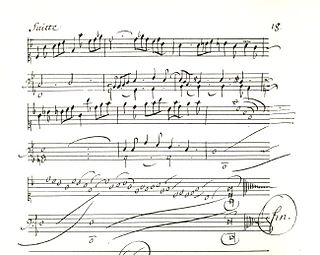
The Bauyn manuscript is a manuscript currently in possession of the Bibliothèque Nationale de France in Paris. It is, along with several printed collections and the Parville manuscript, one of the most important sources for French harpsichord music of the 17th century.

Christophe Rousset is a French harpsichordist and conductor, who specializes in the performance of Baroque music on period instruments. He is also a musicologist, particularly of opera and European music of the 17th and 18th centuries and is the founder of the French music ensemble Les Talens Lyriques.
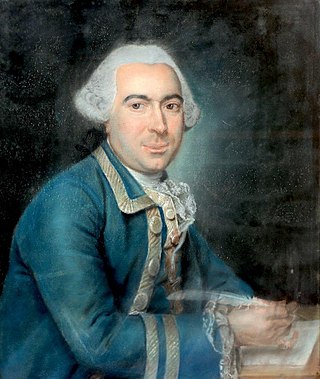
Armand-Louis Couperin was a French composer, organist, and harpsichordist of the late Baroque and early Classical periods. He was a member of the Couperin family of musicians, of which the most notable were his great-uncle Louis and his cousin François.
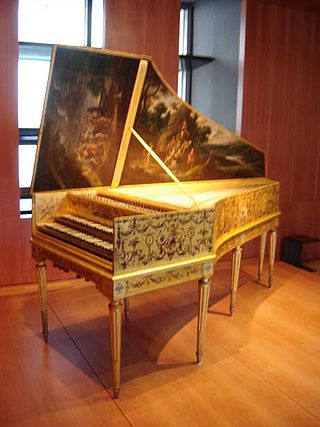
Pascal-Joseph Taskin was a Belgium-born French harpsichord and piano maker.
Frank Twombly Hubbard was an American harpsichord maker, a pioneer in the revival of historical methods of harpsichord building.

William Richmond Dowd was an American harpsichord maker and one of the most important pioneers of the historical harpsichord movement.
The Goermans family were French harpsichord makers of Flemish origin.
The Kirkman family were English harpsichord and later piano makers of Alsatian origin, active from the 1750s until the late 1800s.

The Couchet family were Flemish harpsichord and virginal makers in Antwerp, closely associated with, and descendants of, the Ruckers family.

The harpsichord was an important keyboard instrument in Europe from the 15th through the 18th centuries, and as revived in the 20th, is widely played today.

The Denis family were French harpsichord makers from the mid 16th century to the beginning of the 18th century, by which time the Blanchet family had superseded them as the main harpsichord building dynasty in Paris. Members of the Denis family headed the instrument makers' guild for several generations, but only four harpsichords by members of the family have survived to modern times, and three spinets. Several of the Denis instruments are signed in red chalk under the sound board with the makers name, place of construction and date, along with three five-pointed stars. Instruments by the Denis family were held in high regard well after their time, as witnessed by an entry in the Encyclopédie Methodique from 1785: "The best makers of ordinary harpsichords have been the Ruckers in Antwerp... and Jean Denis of Paris".

Albert Delin was a harpsichord maker in the Low Countries.
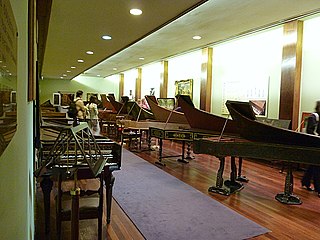
The Russell Collection is a substantial collection of early keyboard instruments assembled by the British harpsichordist and organologist Raymond Russell. It forms part of the Musical Instrument Museums collection of the University of Edinburgh, and is housed in St Cecilia's Hall. Its full name is the Raymond Russell Collection of Early Keyboard Instruments.
Jacques Thomelin, also named Jacques-Denis or Alexandre-Jacques-Denis, was a 17th-century French composer and organist.
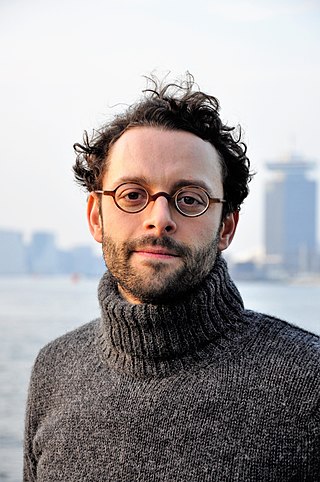
Benjamin Alard is a French classical organist, harpsichordist and clavichordist.